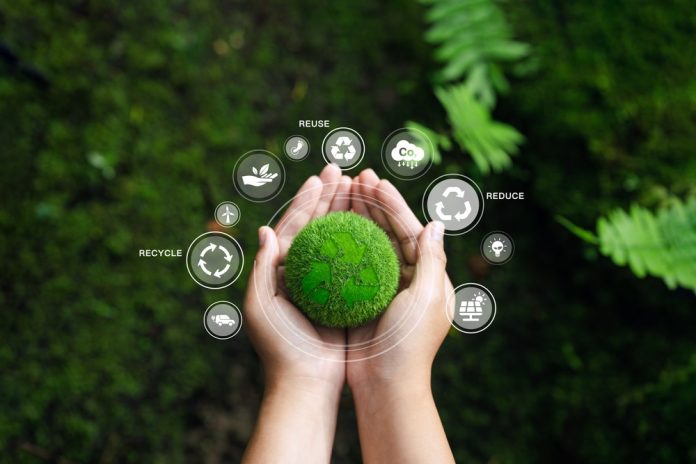Ellie Gabel discusses how pioneering product development with zero-waste principles can help industries reduce overproduction, design inefficiencies, and material waste for a more sustainable future.
Corporations across sectors need to rethink how they produce consumer goods. From fast fashion to electronics, many items produce copious waste because of short-lived trends or unsustainable operations.
Product development has normalised many habits of making tons of trash, and it is time to adopt more zero-waste solutions to reduce generation.
Existing waste issues in product development
Product development has consumed high amounts of resources for so long that wasteful processes are embedded in these operations. These are the most prominent issues for industries to tackle with zero-waste solutions.
Overproduction
Manufacturers make too many products for many reasons, including insufficient demand forecasting, poor understanding of customers and just-in-case operating procedures.
Food producers are some of the worst culprits, with
30%-40% going to landfills instead of plates. Editing product development is cited as a primary way to lower these numbers.
Sometimes, demand spurs overproduction. For example, the need for concrete sand caused prices to escalate 185% more than average in 2022 compared to the previous year.
Companies might increase production of related products to try to lower prices, but the landscape could change and cause overages.
Design inefficiencies
Prototypes for many products end up in the trash, as well as countless defective models. The goods that eventually reach customers are not created with their end of life in mind. Many times, they are not recyclable, modular or repairable.
These issues are the burden of the producer. Engineering blueprints that reduce waste during manufacturing and in the post-consumer phases are critical.
Material waste
Floor technicians see the material from off-cuts and scraps. They also have to handle anything not deemed suitable for sale based on their quality standards. Instead of repurposing materials, they go into the trash.
Packaging waste
Packaging waste causes countless emissions because the consumer is either unwilling or unable to take care of the packaging in a zero-waste way.
While most cardboard packaging is recyclable, the contents may also include excessive corrugate, plastic or packing peanuts. Many of these are cumbersome or unfit for most recycling facilities.
What zero-waste solutions are available?
Combating these industry plagues is possible and necessary for designing a more circular, zero-waste product development precedent.
Design for disassembly and recycling
Product developers should focus on innovating with standardisation and modularity in mind. If an item can contain accessible, heavily produced components, then it makes it easier for consumers to fix and reuse what they purchase.
Disassembly is also critical for recycling and repurposing. It would allow expensive and resource-intensive products like computer parts to live another life in new machinery instead of tossing it all out of its failures.
Use circular economic principles
Companies could guide their development decisions with the circular economic principles, which include:
- Eliminating waste and production
- Circulating products and materials
- Regenerating nature
Using the framework as a guide informs corporate goals. A maker may undergo process discovery and find its operations are low-waste and incorporate reuse, but is it genuinely zero-waste if it does not incorporate regenerative elements?
Leverage minimal and reusable packaging
Organisations need to use as little packaging as they can while keeping items safe during transport. They can achieve this by asking how to make products more durable or how to design a package more considerate of the contents’ weaknesses.
Industries like cosmetics have the best opportunity here to use refillable packaging, where customers can send empties to the manufacturer for repurposing.
Several companies are experimenting with creative packaging alternatives. For example, Coca-Cola attempted to remove plastic labels to eliminate resistance to disposing of Sprite bottles.
While people felt it was not a large enough change to make a difference, changes like refillable glass for Coke Zero were more popular.
Adopt lean manufacturing
Lean manufacturing optimises production in attempts to eliminate waste and boost lead times.
It is one of the easiest ways to enhance production from a holistic point of view while getting zero-waste advantages. Researchers demonstrated that product development can lower scrap rates by up to 90% after incorporating Lean Six Sigma methodologies.
Source sustainable materials
Eco-friendly materials are more likely to contain zero-waste qualities. For example, toys made from bio-based plastics could be renewable and biodegradable. It lowers the effort and knowledge consumers need to sustainably dispose of their stuff.
However, manufacturers should consider the entire life cycle of a product. Harvesting should also use ethical measures. Stakeholders must believe this because negligence could allow other parts of the product’s life to produce waste, even if production is as lean as possible.
The future of zero-waste consumer goods
Product development could be one of the least wasteful aspects of any industry, with attentiveness and sustainable values.
Implementing these practices and extended producer responsibility can let facilities overcome the most prominent challenges in getting to a zero-waste structure.
Simultaneously, these stakeholders will gain other benefits, like reduced defects, high quality and better customer loyalty.





